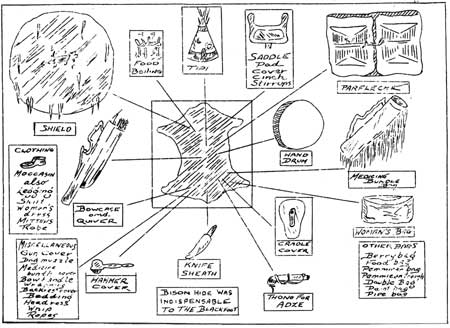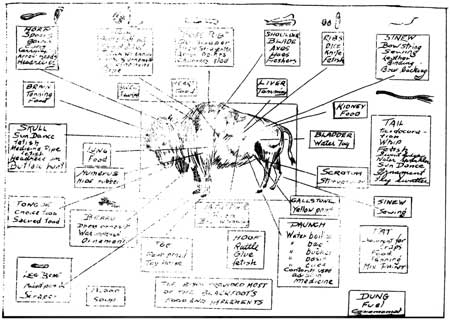|
Field Division of Education The Blackfoot |
 |
APPENDIX
SOME SUGGESTED EXHIBITS FOR BLACKFOOT CULTURE
Exhibit A. The place of the Blackfoot among American Indians.
Since the buffalo is the principle food of the Blackfoot and also shapes their entire culture, it is suggested that a small map, comparable to the accompanying sketch (Fig.9), bring out the fact that the Indians in different parts of America utilized different native foods. In addition to this map, a second, showing the relation of the Plains culture area to the distribution of the buffalo (fig.1) could be used. Neither of these need to be large.

Figure 1. The Blackfoot in relation to the plains culture (red) and
the distribution of the buffalo (orange)

Fig. 9. American Indian Areas of Food Utilization. The Indians in
different areas tended to specialize in using certain foods. To a large
extent, their culture was adapted to this fact.
Exhibit B. The utilization of the buffalo.
The fact that practically all the important traits of material culture of the Blackfoot employed the buffalo in some way could be brought out on charts, like the accompanying. The size and degree of completeness of these would depend upon the available space and materials. If both charts could be used, it is suggested that one center around e complete drawing of a buffalo, showing the utilization of all its parts except the hide. Where possible, small specimens would accompany the labels. The second would show the uses of the hide, either specimens or drawings being included. In both, it would be desirable to have each kind of specimen cross-referenced to the case (if there were other cases) which contained such objects. (Figs. 10 and 11.)
Exhibit C. The method of capturing the buffalo.
A suggested type of sketch showing the driving of a herd over a cliff, accompanies this. (fig. 8.) If this type is used at some other museum, one could show horsemen surrounding a herd.
Exhibit D. A Blackfoot camp.
A small set, showing the place of objects of material culture in a Blackfoot camp would be far more instructive than having such objects arrayed in rows in a case. If a camp were made it should show a tipi partly cut away so as to reveal its interior. There should also be a tipi in process construction, showing four-pole foundation, and one which is complete bearing characteristic designs. The remainder of the tipis in the camp could be painted on the background.
The camp would be in the form of a circle, if it were during the Sun Dance. In this case, a Sun Dance lodge with associated special tipis should be indicated. (See McClintock, 1923, p.20, for a general view of a camp circle; p. 261, shows, another view, also McClintock, 1910, photo p. 456. Dengler, p.39, gives also a full page illustration of a Piegan camp, taken from Maximilian. McClintock, 1923; p. 70 shows a sun shelter.
If the camp were not during the Sun Dance, there is some doubt as to whether the camp circle would be formed. It is probable that if it were a small encampment of a relatively few bands, they would be placed not in a circle, but in rows, bordering a kind of central avenue. Schultz and Donaldson (p.5) quote Hendry, who visited a Blackfoot camp in 1754, stating that their lodges were "in two regular lines, which formed a broad street, open at both ends." Whether a circle or this arrangement were represented, however, would affect the background rather than the representatives of daily life in the foreground.
The tipi that is partly cut away could be reconstructed like that shown in McClintock (1910, p.20, or 1923, p. 92). Such interior arrangement is also described by Wissler (1910, pp.105-8) and Grinnell (1912; 198-99). Each object should be provided with a short label, and, if specimens as such were exhibited in cases elsewhere, there should be cross-references to these cases that the visitor might turn to see the actual objects.
The interior of the tipi would expose the ground plan arrangement and interior objects shown in the accompanying sketches. (figs.3 and 4.) These would be: beds, backrests, fireplace or fireplaces, altar, goods and ceremonial objects stored. It would also show the backwalls of the tipi. For explanation of the construction of the backrest, see Wissler (1910, figs. 12,13 and plate 7 and explanation on pp. 53-54.)
Outside the tipi, various things could be included, depending upon the size of the group. It is important not to overcrowd it. The following are suggestions, descriptions and references for which will be found in the accompanying text:
A staked buffalo hide.
A woman scraping a buffalo hide.
A Woman putting up a tipi.
A cradle board.
A Horse travois,
A man in society regalia and his horse with characteristic trappings.
Men playing the hoop and pole game.
A rack with drying meat.
A tripod back of a tipi with an important medicine bundle.
Children playing with typical toys.
In the distance, a man driving horses.
Somewhere in the background of a winter camp could be shown the winter's supply of wood. (See McClintock, 1910: p. 371 for illustration of this.)

Fig. 3. Interior Arrangement of a Tipi.
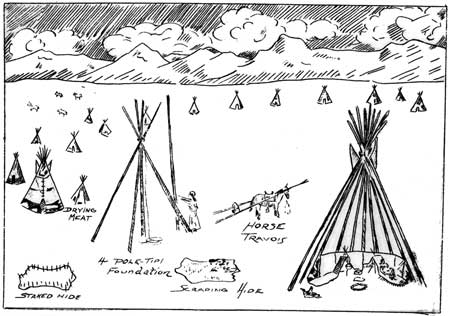
Fig. 4.
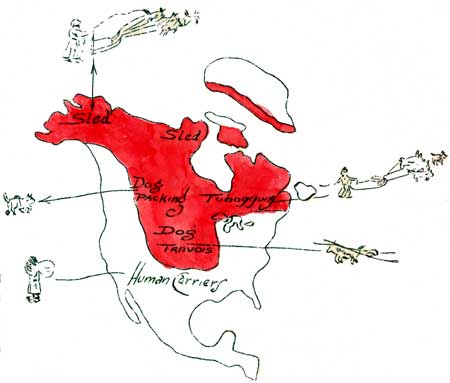
Fig. 5. Types of Dog Transporation Used by the American Indian. The
Travois, formerly employing the dog, is but a variety of devices using
the dog found in the northern part of North America. South of this
area, only human carriers were known. (After Wissler, 1922, fig. 7, and
pp. 28-41).
Exhibit E The Sun Dance.
A group showing the camp circle in the background and the Sun Dance Lodge in the fore ground with the accessories in some detail is one of the few ways Blackfoot religion could be represented in a museum. This would show the special lodge of the medicine woman near the Sun Dance Lodge, the sweat house, and the shelter for the principle performers in the ceremonies. In the Sun Dance lodge would be seen the center pole, the "weather shamans" booth, and possibly a number of dancers.
Exhibit F. A medicine bundle could be exhibited in a small case, having labels explaining briefly its significance. If it could be accompanied by some sort of illustration of the ceremony of opening it, this would enhance its significance. Necessary references for this and given in the accompanying text.
Exhibit G. Blackfoot habitat.
A map, like that in the accompanying text, (fig.2) should show the location of the three major divisions of the Blackfoot and neighboring tribes.
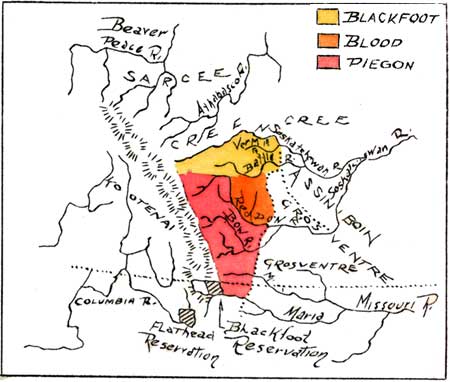
Figure 2. Range of the Blackfoot Tribes.
Exhibit H. Blackfoot place names in Glacier Park.
Unfortunately there is a little material as to the Blackfoot utilization of Glacier Park. Place names, however, are given in Schultz, (1916:6-9, 11-20, 21-23, 23-42, 107-108, 146,153,154,226-232,233-235). Schultz (1926-a and 1926-b) gives place names in Glacier Park in both Blackfoot and Kootenai. These could be shown on a map of the Park.
Exhibit I. Miscellaneous Objects.
Mere cases of objects are to be avoided. If, however, it seems necessary to use some of these it is suggested that each case develop some central theme. For example, a case might be devoted to religion and include objects having supernatural value. These would range from small amulets through shields, clothing, etc. to medicine bundles and would be accompanied by labels explaining the particular significance of each and the dream theory or purchase theory back of each. Another case might be devoted to Blackfoot art and contain two series of articles (these, of course, would depend upon what is available), one illustrating geometric woman's art, the other illustrating pictographic men's art. In any case, where space and arrangement permitted, a small map, say four inches square, could accompany certain types of specimens and show the distribution of that culture trait in America. Samples of what could be done in this way follow. (figs. 5, 6, and 7.) This would serve to give a perspective on the Blackfoot.
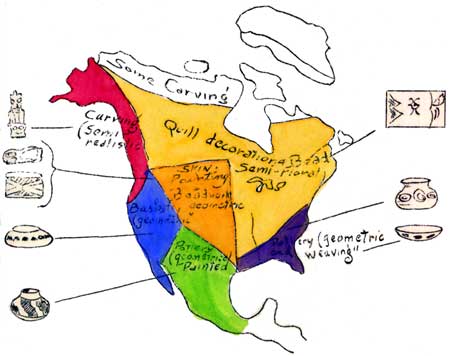
Fig. 6. The Principle Areas of American Indian Art. (More or less
after Wissler, 1922, p. 81.).
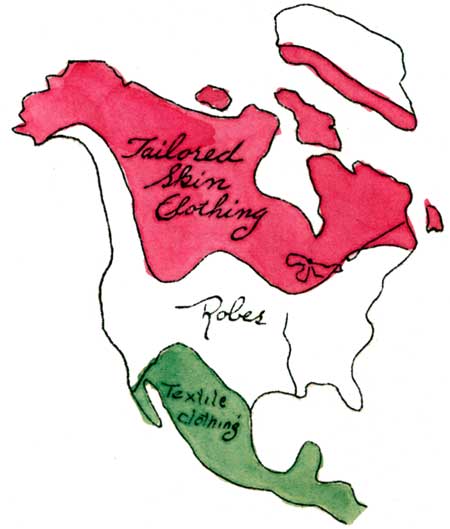
Fig. 7. The Distribution of Tailored Clothing in Native America. (After
Wissler, 1922, p. 61.) Moccasins were more widely distributed than
tailored clothing.

|

|

|
|
|
Last Modified: Sat, Mar 22 2003 10:00:00 am PDT |


